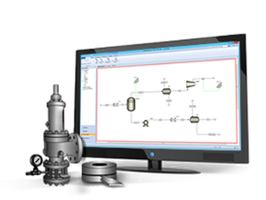Power2Gas - a system simulation
Power to gas system simulation
Background
The share of electricity from renewable energy sources in the European electricity mix is increasing. As the power generated from wind and solar systems fluctuates, the balance between renewable power supply and demand is becoming more challenging. Furthermore, there are additional challenges to transmit the increasing volumes of renewable power from wind or solar systems to consumers.
The gas infrastructure can accommodate large amount of electricity converted into gas in case that the renewable power supply is much larger than the grid capacity or the regional electricity demand. Therefore power-to-gas makes it possible to increase the share of renewable energy, making this system one of the most important topics in achieving a carbon-neutral gas supply in 2050.

Figure 1: Process overview of power to gas
Hydrogen production
For the simulation of hydrogen production TRNSYS studio is used. There are three ready for use modes of alkaline electrolyzers offered by TRNSYS. In addition to these components a PEM electrolyzer model is developed and a performance comparison between 2 kinds of water electrolyzers is performed based on the local weather conditions.
 |
 |

Figure 2: Simulation environment
Methanation
Because of the increasing demand for natural gas and the reduction of greenhouse gases there is an even greater interest in the production of synthetic natural gas. Natural gas can be produced via methanation of COx . Many thermodynamic and kinetic details involved in this process are not fully understood yet. In this part a complete analysis of the main reactions occurring in the methanation of carbon oxides is conducted using Aspen Plus.
Purification
Several technologies are available for CH4 capture after a methanation reactor. One option is to separate CHx from the products using conventional approachs such as chemical absorption/stripping with amine solvents, which are commercially available. Membrane gas separation involves no moving parts, is compact and modular, and is gaining more and more attention as it offers a potential alternative to the conventional systems.
Go to top

